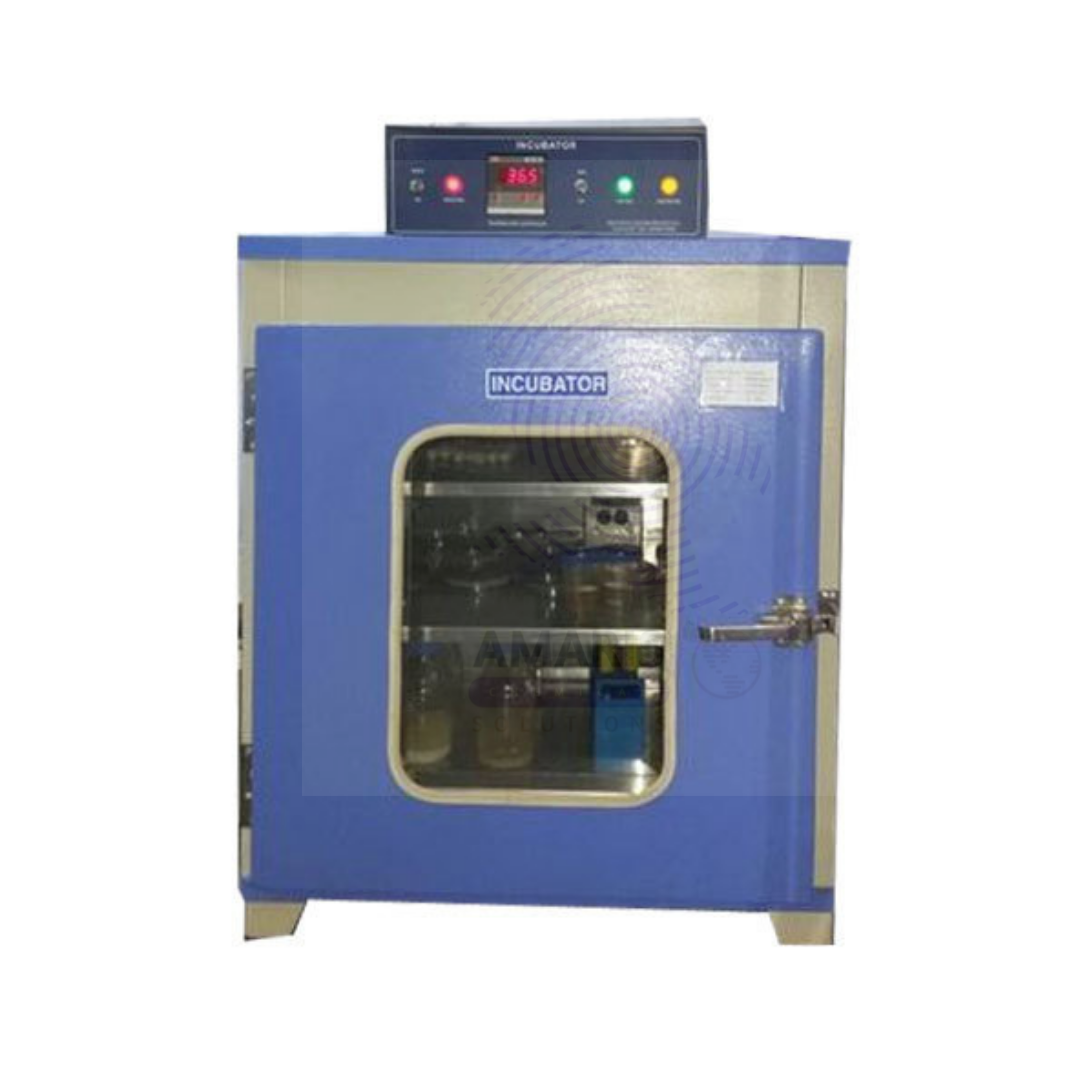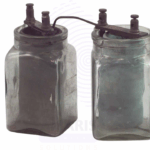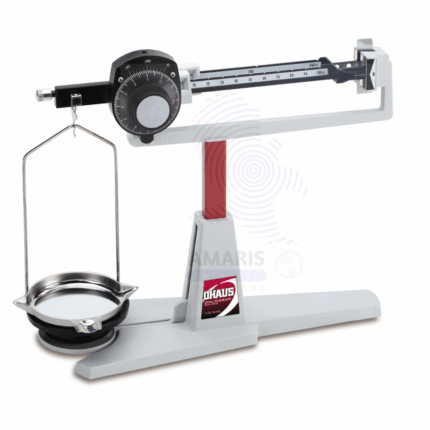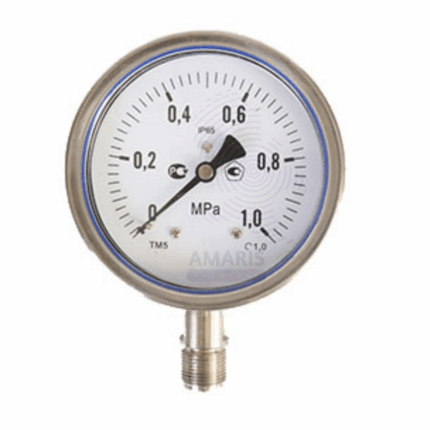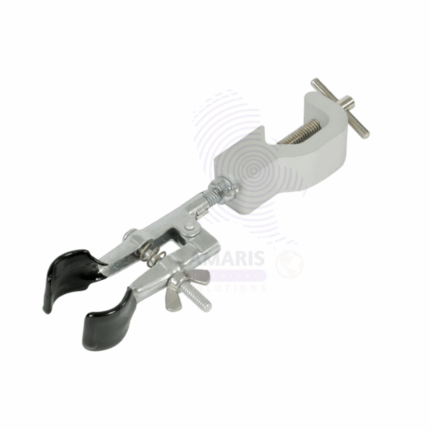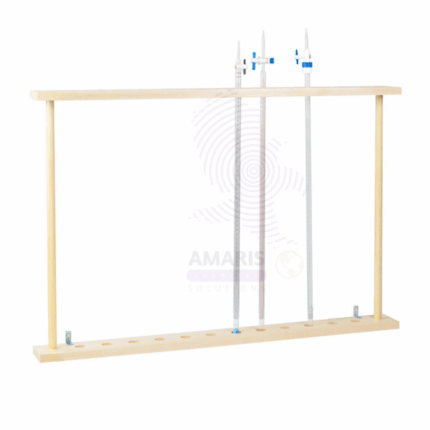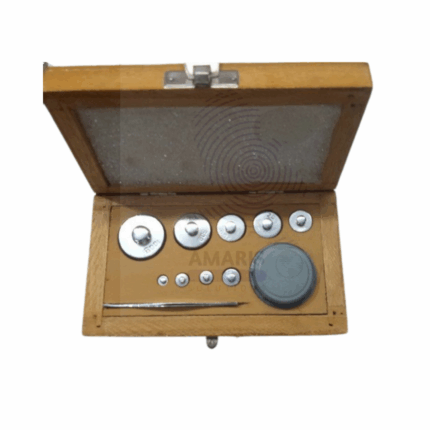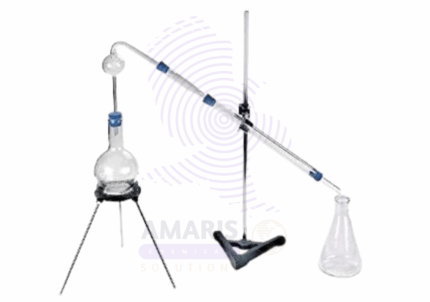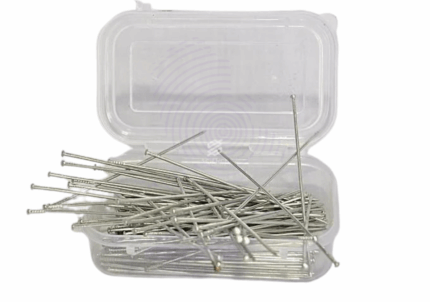Electric Incubator
Electric Incubator is a precision-controlled laboratory device designed to provide a stable and uniform environment for the incubation of biological samples, cultures, and experimental materials. It operates by maintaining a constant temperature and humidity level through electric heating elements, fans for air circulation, and advanced thermostatic controls. Commonly constructed with insulated walls, a transparent viewing window, and adjustable shelves, electric incubators are essential in microbiology, biotechnology, pharmaceutical, and agricultural laboratories. They facilitate optimal growth conditions for microorganisms, cell cultures, and eggs, enabling research, diagnostic, and production processes. The device’s reliability, accuracy, and ease of use make it indispensable for maintaining controlled incubation parameters in various scientific and industrial applications.
Electric Incubator
Primary Uses
- Incubation of bacterial, fungal, and cell cultures for microbiological and biomedical research.
- Controlled environment for hatching eggs in agricultural and veterinary science.
- Used in pharmaceutical labs for stability testing of drug formulations.
- Maintenance of constant temperature for enzymatic and biochemical reactions.
- Culturing of microorganisms for diagnostic and quality control purposes.
Secondary Uses
- Seed germination and plant tissue culture incubation in agricultural research.
- Storage and incubation of sensitive biological samples requiring precise temperature control.
- Use in food industry for fermentation processes and quality testing.
- Testing and development of temperature-sensitive materials and components.
- Educational demonstrations of controlled environment effects on biological growth.
1. Basic Identification Attributes
- Material: Insulated metal or plastic body with glass viewing window.
- Components: Electric heating elements, thermostat, fan, humidity control system, adjustable shelves.
- Sizes: Available in varied capacities, from benchtop units to large walk-in models.
2. Physical & Chemical Properties
- Provides uniform temperature control typically ranging from ambient to 60-70°C.
- Equipped with humidity regulation to maintain desired moisture levels.
- Constructed to resist corrosion and contamination for laboratory safety.
- Electrical operation requiring stable power supply with safety fuses.
3. Safety & Hazard Attributes
- Risk of burns from heated surfaces; use caution when opening incubator doors.
- Electrical safety concerns; must be properly grounded and inspected.
- Possible contamination risk from improper sample handling inside incubator.
4. Storage & Handling Attributes
- Place in clean, dry, and vibration-free environment.
- Regular cleaning and sterilization recommended to prevent microbial contamination.
- Avoid exposure to corrosive chemicals or excessive moisture externally.
- Follow manufacturer’s guidelines for maintenance and calibration.
5. Regulatory & Compliance Attributes
- Manufactured in compliance with laboratory safety standards (ISO, ASTM).
- Suitable for use in GMP, GLP, and pharmaceutical quality-controlled laboratories.
- Electrical components comply with international safety certifications (CE, UL).
6. Environmental & Health Impact
- Energy-efficient designs reduce environmental footprint.
- Contains recyclable materials; proper disposal recommended for electrical parts.
- Enables safer, controlled biological processes reducing contamination risks.
Safety Handling Precautions
- Use PPE such as gloves and lab coats when handling cultures and samples.
- Ensure incubator door is securely closed during operation to maintain conditions.
- Disconnect power supply before maintenance or cleaning.
First Aid Measures
- In case of burns, cool the affected area immediately and seek medical attention if severe.
- For exposure to contaminated samples, follow standard biohazard protocols.
- Report electrical shocks promptly and seek medical care.
Firefighting Measures
- Non-flammable device but electrical faults may cause fires.
- Use CO2 or dry powder extinguishers for electrical fires.
- Avoid water on electrical components to prevent shock risk.


 Preservatives(food)
Preservatives(food) Flavor Enhancers
Flavor Enhancers Acidulants
Acidulants Sweeteners
Sweeteners Antioxidants
Antioxidants Colorants(food)
Colorants(food) Nutraceutical Ingredients (food)
Nutraceutical Ingredients (food) Nutrient Supplements
Nutrient Supplements Emulsifiers
Emulsifiers
 Collectors
Collectors Dust Suppressants
Dust Suppressants Explosives and Blasting Agents
Explosives and Blasting Agents Flocculants and Coagulants
Flocculants and Coagulants Frothers
Frothers Leaching Agents
Leaching Agents pH Modifiers
pH Modifiers Precious Metal Extraction Agents
Precious Metal Extraction Agents
 Antioxidants(plastic)
Antioxidants(plastic) Colorants (Pigments, Dyes)
Colorants (Pigments, Dyes) Fillers and Reinforcements
Fillers and Reinforcements Flame Retardants
Flame Retardants Monomers
Monomers Plasticizers
Plasticizers Polymerization Initiators
Polymerization Initiators Stabilizers (UV, Heat)
Stabilizers (UV, Heat)
 Antifoaming Agents
Antifoaming Agents Chelating Agents
Chelating Agents Coagulants and Flocculants
Coagulants and Flocculants Corrosion Inhibitors
Corrosion Inhibitors Disinfectants and Biocides
Disinfectants and Biocides Oxidizing Agents
Oxidizing Agents pH Adjusters
pH Adjusters Scale Inhibitors( water)
Scale Inhibitors( water)
 Antioxidants(cosmetic)
Antioxidants(cosmetic) Emollients
Emollients Fragrances and Essential Oils
Fragrances and Essential Oils Humectants
Humectants Preservatives
Preservatives Surfactants(cosmetic)
Surfactants(cosmetic) Thickeners
Thickeners UV Filters
UV Filters
 Fertilizers
Fertilizers Soil Conditioners
Soil Conditioners Plant Growth Regulators
Plant Growth Regulators Animal Feed Additives
Animal Feed Additives Biostimulants
Biostimulants Pesticides (Herbicides, Insecticides, Fungicides)
Pesticides (Herbicides, Insecticides, Fungicides)
 Active Pharmaceutical Ingredients (APIs)
Active Pharmaceutical Ingredients (APIs) Excipients
Excipients Solvents(pharmaceutical)
Solvents(pharmaceutical) Antibiotics
Antibiotics Antiseptics and Disinfectants
Antiseptics and Disinfectants Vaccine Adjuvants
Vaccine Adjuvants Nutraceutical Ingredients (pharmaceutical)
Nutraceutical Ingredients (pharmaceutical) Analgesics & Antipyretics
Analgesics & Antipyretics
 Analytical Reagents
Analytical Reagents Solvents(lab)
Solvents(lab) Chromatography Chemicals
Chromatography Chemicals Spectroscopy Reagents
Spectroscopy Reagents microbiology-and-cell-culture-reagents
microbiology-and-cell-culture-reagents Molecular Biology Reagents
Molecular Biology Reagents Biochemical Reagents
Biochemical Reagents Inorganic and Organic Standards
Inorganic and Organic Standards Laboratory Safety Chemicals
Laboratory Safety Chemicals Specialty Laboratory Chemicals(Special Laboratory Equipment)
Specialty Laboratory Chemicals(Special Laboratory Equipment)
 Demulsifiers
Demulsifiers Hydraulic Fracturing Fluids
Hydraulic Fracturing Fluids Scale Inhibitors(oil)
Scale Inhibitors(oil) Surfactants(oil)
Surfactants(oil) Drilling Fluids
Drilling Fluids
 Dyes and Pigments
Dyes and Pigments Bleaching Agents
Bleaching Agents Softening Agents
Softening Agents Finishing Agents
Finishing Agents Antistatic Agents
Antistatic Agents
 Admixtures
Admixtures Waterproofing Agents
Waterproofing Agents Sealants and Adhesives
Sealants and Adhesives Curing Compounds
Curing Compounds Concrete Repair Chemicals
Concrete Repair Chemicals Anti-Corrosion Coatings
Anti-Corrosion Coatings
 Surfactants(cleaning)
Surfactants(cleaning) Builders
Builders Enzymes
Enzymes Solvents (Cleaning)
Solvents (Cleaning) Fragrances
Fragrances
 Electronic Chemicals
Electronic Chemicals Catalysts
Catalysts Lubricants
Lubricants Photographic Chemicals
Photographic Chemicals Refrigerants
Refrigerants Automotive chemicals
Automotive chemicals Pyrotechnic Chemicals
Pyrotechnic Chemicals
 Biodegradable Surfactants
Biodegradable Surfactants Bio-based Solvents
Bio-based Solvents Renewable Polymers
Renewable Polymers Carbon Capture Chemicals
Carbon Capture Chemicals Wastewater Treatment Chemicals
Wastewater Treatment Chemicals
 Pigments
Pigments Solvents(paint)
Solvents(paint) Specialty Coatings
Specialty Coatings Binders/Resins
Binders/Resins Additives
Additives Driers
Driers Anti-Corrosion Agents
Anti-Corrosion Agents Functional Coatings
Functional Coatings Application-Specific Coatings
Application-Specific Coatings
 Fresh Herbs
Fresh Herbs Ground Spices
Ground Spices Whole Spices
Whole Spices Spice Blends
Spice Blends Dried Herbs
Dried Herbs
 Leavening Agents
Leavening Agents Dough Conditioners
Dough Conditioners Flour Treatments
Flour Treatments Fat Replacers
Fat Replacers Decoratives
Decoratives Preservatives(baking)
Preservatives(baking)
 Plasticizers & Softeners
Plasticizers & Softeners Reinforcing Agents
Reinforcing Agents Adhesion Promoters
Adhesion Promoters Vulcanizing Agents
Vulcanizing Agents Antidegradants
Antidegradants Blowing Agents
Blowing Agents Fillers & Extenders
Fillers & Extenders Accelerators & Retarders
Accelerators & Retarders